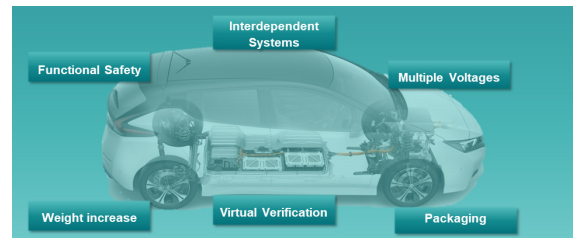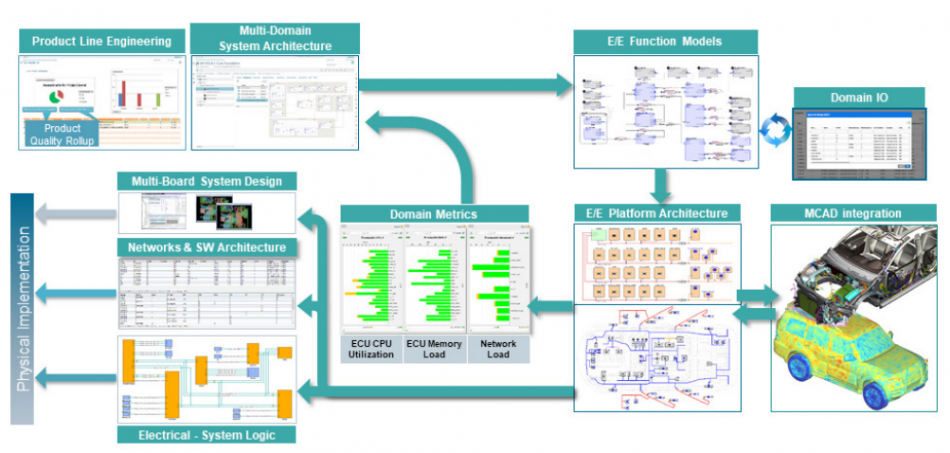Automotive E/E design demands a multi-domain, system-led approach
The increasing E/E challenges posed by electric and autonomous vehicles is driving a shift towards cross-domain, model-based design strategies that leverage greater tool automation, a new white paper argues.
‘Solving the E/E dilemma of electric and autonomous vehicles‘ identifies three overarching tasks for automotive E/E projects: integration with body and mechanical elements of the overall design; meeting safety requirements in terms of signal routing, redundancy and traceability; and an ability to simulate early and often under various conditions and combined scenarios (battery charge/discharge, noise, vibration and harshness (NVH), etc).
Some idea of the specific demands such a strategy must encompass is shown in Figure 1.
Companies delivering the latest best practices for the evolving designs being placed on E/E for automotive are adopting the cross-domain approach based on the type of full-flow methodology shown in Figure 2. The greater role that can be played by automation tools – such as Capital from Siemens Digital Industries Software – both addresses increasing time-to-market pressures and enables greater reuse, freeing up designer time for greater exploration and innovation.
“In this approach, E/E engineering is driven from a multi-domain systems architecture that accounts for mechanical, electrical, software, networks, fluids, and other domains,” argue authors Dan Scott of Siemens and automotive wiring consultant Ulrike Hoff.
“The electrical engineers can import domain specific functional models, which can exchange information on interfaces and I/O with E/E domains to inform the functional design. These are then used to drive the E/E platform architectural design, which can be represented as a network view including ECUs and communication busses, or as a platform toplogy view.
“This stage is how we address the Content Dilemma…. The Content Dilemma represents the conflict between the technology content that vehicle manufacturers try to integrate into their vehicles, and the weight, cost and packaging space required for electrical systems content, including wire harnesses.”
The paper describes the methodology in detail and its applications to particular challenges within a broader E/E flow. It is available for immediate download.

